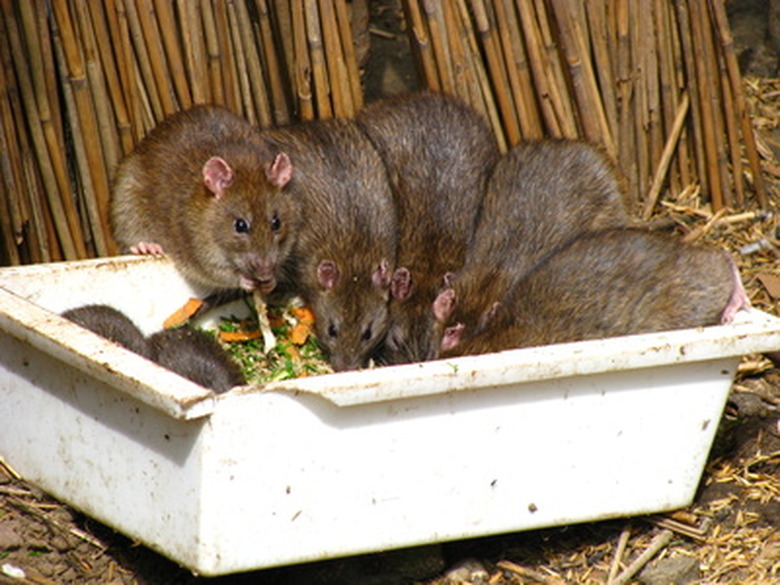Bird Feeders & Rats
While backyard bird feeders attract many interesting songbirds, they can also attract vermin, according to the Public Health Department of King County in Washington. The rats can be attracted to the same seeds used to feed the birds. However, there are some precautions that can keep your bird feeder a "birds only" food source.
Feeder Placement
Feeder Placement
Always place the bird feeder where access is difficult for small mammals such as squirrels and rats. This means the feeder should be placed at least 4 feet off the ground and 8 feet away from fences, tables, branches or any other object the rat could jump from to the feeder.
Bird Feed
Bird Feed
Select feeds that the birds will consume at the feeder rather than scratching to the ground. Put seeds in the feeder in the morning and empty the feeder in the evening. This means the feeders would be empty overnight when rats are most active.
Keep it Clean
Keep it Clean
Rake the area around the bird feeder and clean up any spilled bird seed on a daily basis. A pan or tray under the feeder makes cleaning easier although it will accumulate bird droppings as well as spilled seed. Don't leave seeds on the ground overnight when it will attract the nocturnal rats. Monitor the area after dark for signs of rats.
Storage
Storage
Keep bird seed, and any other things such as pet foods, that will attract rats in metal containers. The old-fashioned metal garbage can works well. Plastic tubs or garbage cans are easily chewed through by rats.
If Rats are Seen
If Rats are Seen
According to Cornell University, if rats are detected, bird feeding should be stopped. Wait at least two weeks before restoring the seed to the feeder. The King County Health Department says all bird feeding activities should be stopped in the neighborhood if rat trapping or poisoning activities are going on. The lack of other food sources force the rats to the traps or poisons.
Cite This Article
MLA
Allen, Keith. "Bird Feeders & Rats" sciencing.com, https://www.sciencing.com/bird-feeders-rats-6548559/. 22 November 2019.
APA
Allen, Keith. (2019, November 22). Bird Feeders & Rats. sciencing.com. Retrieved from https://www.sciencing.com/bird-feeders-rats-6548559/
Chicago
Allen, Keith. Bird Feeders & Rats last modified March 24, 2022. https://www.sciencing.com/bird-feeders-rats-6548559/
